Superphylum Heterokonta Higher classification Lessoniaceae | Order Laminariales Scientific name Macrocsytis Rank Genus | |
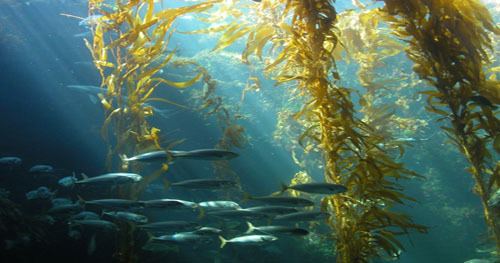 | ||
Similar Macrocystis pyrifera, Kelp, Brown algae, Nereocystis, Deep‑sea tangle | ||
Macrocystis pyrifera
Macrocystis is a genus of kelp (large brown algae). This genus contains the largest of all the phaeophyceae or brown algae. Macrocystis has pneumatocysts at the base of its blades. Sporophytes are perennial, and individual stipes may persist for many years. The genus is found widely in subtropical and temperate oceans of the Southern Hemisphere, and in the northeast Pacific from Baja California to Sitka, Alaska. Macrocystis is a major component of kelp forests.
Contents
- Macrocystis pyrifera
- Giant kelp forest macrocystis pyrifera tasmania australia
- Description
- Life cycle
- Growth
- Ecology
- Species
- Distribution
- References
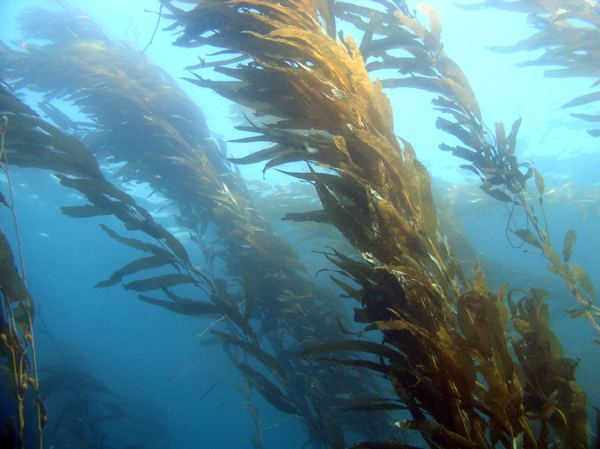
One species, Macrocystis pyrifera, under this genus, has the fastest linear growth of any organism on earth.
Giant kelp forest macrocystis pyrifera tasmania australia
Description
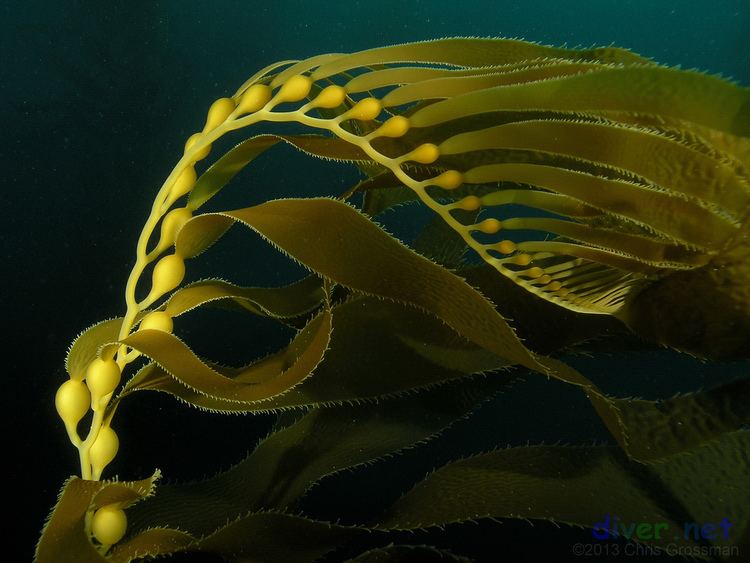
Macrocystis is a genus of kelp, some species of which are so huge that the thallus may grow to up to 60 m (200 ft). The stipes arise from a holdfast and branch three or four times from near the base. Blades develop at irregular intervals along the stipe. M. pyrifera grows to over 45 m (150 ft) long.
The stipes are unbranched and each blade has a gas bladder at its base.
Life cycle
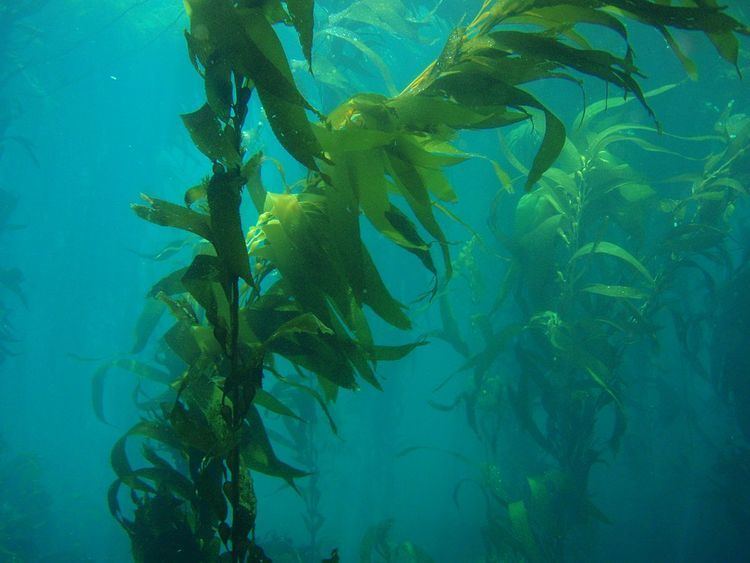
The macroscopic sporophyte has many specialized blades growing near the holdfast. These blades bear various sori containing sporangia, which release haploid spores, which will grow into microscopic female and male gametophytes. These gametophytes, after reaching the appropriate substrata, grow mitotically to eventually produce gametes.
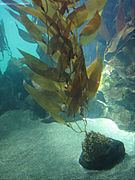
Females release their eggs (oogonia) along with a pheromone, the lamoxirene. This compound triggers sperm release by males. The Macrocystis sperm consists of biflagellate non-synthetic antherozoids, which find their way to the oogonia following the lamoxirene. The egg is then feconded to form the zygote, which, through mitosis, begins growth.
Growth
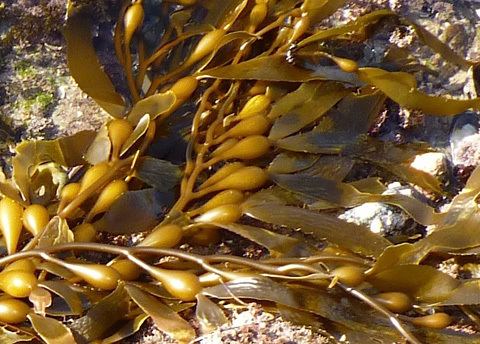
Juvenile giant kelp grow directly on the parent female gametophyte, extending one or two primary blades, and beginning a rudimentary holdfast, which will eventually cover the gametophyte completely. Growth occurs with lengthening of the stipe, and splitting of the blades. This occurs by means of small tears where the blade meets the stipe, which splits the stipe into two. Pneumatocysts grow after the first few blade splittings.
Ecology
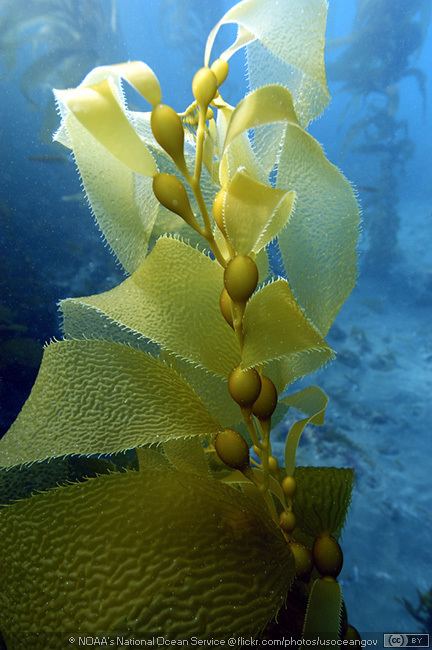
Macrocystis species typically grow forming extensive beds, large "floating canopies", on rocky substrata between the low intertidal. It was harvested by barges which used large blades to harvest up to 300 tons a day along the coast of California.
Species
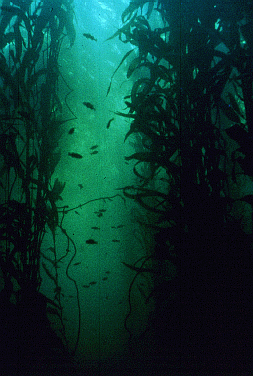
Initially, 17 species were described within the genus Macrocystis. In 1874, Hooker, following blade morphology, put them all under the same taxon, Macrocystis pyrifera. Then came the current classification, based on the holdfast morphology, which distinguished three species. A fourth one was described in 1986, based on the blade morphology. Here are the four currently accepted species of Macrocystis.
However, this classification may also be revised since three of the four Macrocystis species are interfertile (M. laevis ' interfertility has not yet been tested), holdfast as well as blade morphology is plastic, and all four species are genetically similar.
Recent genetic research increasingly favors the grouping of all Macrocystis species into one: Macrocystis pyrifera.
Distribution
The species of this genus are distributed along the eastern Pacific coast from Alaska to Mexico and from Peru and along the Argentinian coast as well as in Australia, New Zealand, South Africa and most sub-Antarctic islands to 60°S.
